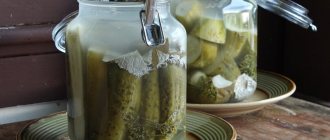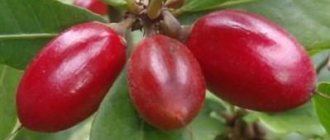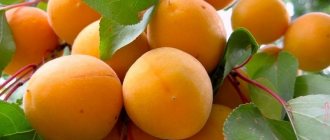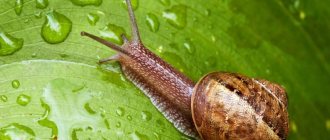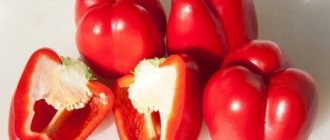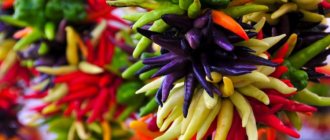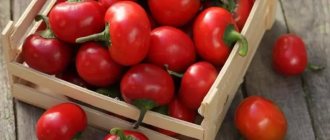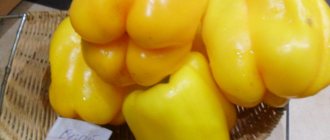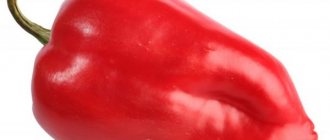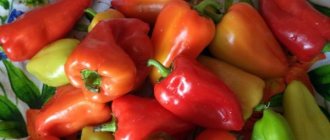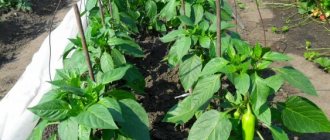Characteristics of decorative pepper
Decorative peppers have come into fashion recently, but they are quite an ancient culture. It was possible to see pots of pepper on the windowsill many decades ago, but in recent years many varieties have appeared, specially bred for home cultivation. This vegetable belongs to the nightshade family, is found wild in Asia and America, and is grown everywhere in apartments. It is a perennial ornamental plant; its bushes, as a rule, do not exceed 30–40 cm in height.
In reality, the lifespan of a plant in an apartment is about five years, but many people grow it as an annual, without leaving it for the winter. If pepper leaves, which have an oblong, lanceolate or ovoid shape, do not differ much depending on the variety, then the appearance (shape and color) of the fruits can be very diverse. The size, as a rule, does not exceed a few centimeters. A bush planted at home performs a decorative function both during flowering and during fruiting. One plant is enough, since the crop is self-pollinating.
As a rule, this pepper blooms in early summer, and the fruits ripen from August to October. Home-grown varieties are pungent and contain the alkaloid capsaicin. It is the fruits that are used in small quantities in cooking; vegetative parts of the plant are poisonous.
Varieties of decorative peppers
There are dozens of varieties of decorative peppers, and most of them are edible. Of course, these are the ones that are planted mainly by indoor gardening enthusiasts. The most popular varieties are the following.
- A small miracle - a plant up to 30 cm high, lush, with red fruits sticking out upward, weighing up to 5 g. Medium-sharp, used fresh and in cooking.
- Jellyfish is a bush no higher than 25 cm, heavily leafy. The fruits are thin, elongated, up to 6 cm long, red, spicy. It is highly unpretentious.
- Ogonyok is perhaps the most famous variety with fairly large (up to 40 g) bright red, burning fruits. Universal use.
- Aladdin is a variety grown in open ground, where it grows as a half-meter bush, on the windowsill - a little lower. The fruits have a transitional color: during the ripening process they are yellow, purple, and red. The taste is very spicy.
- Phoenix is a variety that grows as a low but spreading bush. It bears fruit on the windowsill for a very long time; cone-shaped peppers up to 4 cm long are directed upwards. The color ranges from yellow to red, the taste is moderately spicy.
- Salute is one of the easiest varieties to grow, bushes no higher than 25 cm. Peppers weighing up to 6 g, orange, with a fiery taste.
- Filius Blue is a pepper that bears purple fruits, but their color during ripening can be orange or red. It can bear fruit almost all year round. The bush is no more than 25 cm high, but spreading, requiring free space. The variety is high-yielding, the purpose of the fruit is universal.
- Indian Summer is a rather old variety, shade-tolerant, grows as a low, rounded bush. The fruits are round and weigh about 5 g, the color is dark red, the taste is sharp. The purpose of the fruit is universal.
- Sirius is a Dutch variety, a bush up to 20 cm high, bearing a large number of small fruits that change color from blue to dark red. Considered a novelty, it can bear fruit in an apartment for up to seven years.
Photo gallery: varieties of decorative peppers
The little miracle looks very impressive
Medusa lives up to its name
Ogonyok is the most famous variety
Aladdin also grows well in the garden
Filius Blue looks like wild berries
Indian Summer is one of the oldest varieties
Sirius is still poorly known to our gardeners
Description and characteristics of the variety
This variety is a type of chili. On 1 bush, up to 45-50 fruits are formed, which have nutritional value. But, in addition, Medusa pepper is an ornamental cultivar. The plant grows compactly, the height of the shoots is 30-40 cm. The stems are straight and do not require garter.
In terms of ripening time, Medusa Gorgon pepper belongs to the line of early ripening peppers. After 110 days, the fruits turn red and reach 6 cm in length.
What you should know about the hot pepper Medusa:
- average weight 7-10 g;
- length 5-7 cm;
- the skin is strong;
- glossy tints on the surface;
- The final color is ruby (first green, then orange).
Hot pepper Jellyfish looks beautiful in the home interior, where it can be grown in pots for several years. To satisfy the needs of a family of 3-4 people, it is enough to plant 2-3 bushes.
Hot peppers are eaten as a snack with borscht, soups, and added to sauces and ketchups. You can also make many interesting seasonings from them. The peppers are dried in a garland on the window or in a dehydrator, then crushed into powder.
Growing from seeds
Seeds of various varieties of ornamental peppers are now quite available both in regular and online stores, and their germination persists for 3–4 years.
Timing of seed sowing and pre-planting treatment, germination
At home, you can sow pepper seeds in pots at any time of the year, but most amateurs prefer to do this in February: this makes it easier to grow full-fledged bushes and get the first harvest in the warm season with sufficient natural light. Some seeds are sold ready to sow, while in other cases they prefer to be lightly prepared. Fresh seeds will sprout normally without this, but they are often treated with growth stimulants, for example, Epin, according to the instructions for the drug. In addition, many gardeners, just in case, disinfect seeds according to the usual schemes (for example, 20–30 minutes in a dark solution of potassium permanganate).
Ornamental pepper seeds look like sweet pepper seeds, only a little smaller.
You can sow dry seeds immediately after pre-treatment, but often they germinate rather slowly, so first they are germinated according to the usual method: in a damp cloth at a temperature of 24–28 oC. As soon as tails appear from several seeds, they should be planted in the ground.
Preparation of containers and substrate, sowing of seeds and conditions for their germination
Ultimately, the pepper will grow in a half-bucket pot, but first the seeds can be sown in small cups of about 300 ml. For home growing, it is better to immediately buy ready-made soil in the store. It must be a loose composition, so humus is often specially added to ordinary universal soil or soil for peppers. In addition, add a little vermiculite or perlite to increase breathability and moisture capacity. The best way out is to sow the seeds in peat tablets.
The seeds are sown to a depth of about 1 cm, the cups are covered with glass and placed in a warm place. It is better if they are immediately placed in the light: as soon as the shoots appear, they will strive towards the light and in the semi-darkness they may stretch out excessively. Shoots may appear in 3–4 days or significantly later, especially if the seeds have not been prepared. Immediately remove the glass and reduce the temperature by 4-5 degrees for a week.
Further care before transplantation
At first, the seedlings are not watered, but only sprayed with a spray bottle so as not to over-moisten the soil. The water should be warm and settled. The light should be bright, but diffused: direct sunlight has a detrimental effect on young plants. If the soil was nutritious, you can do without fertilizing before the first transplant, but if the seedlings have stopped growing, they can be fed with any universal fertilizer. The first transplant (not picking, but transshipment!) is carried out when the third true leaf appears.
Pepper transplant
For the first transplant, take approximately liter pots with holes for water drainage in the bottom. Lay a drainage layer (2–3 cm of small pebbles or coarse sand), and then soil similar to the one in which the seeds were sown. Replant the pepper at the same depth as it grew before, being careful not to injure the roots. It is better to transfer the plant along with a lump of earth into a new container and carefully add soil, filling all the voids with it. Water the plant well with warm water and place it in partial shade for several days. It is advisable not to water it anymore for a week.
For each transplant, you need to select a pot according to size.
It is customary to replant ornamental peppers twice a year. The second, necessary, transplant into a large pot (about 5 liters in volume) is carried out in the phase of 6–7 true leaves; it is performed similarly to the first. During subsequent transplants, the pot and partially the soil are changed, being careful not to injure the root system.
Bell
The variety is early ripening. The culture produces unusual vegetables, similar in shape to bells. At home, the bush reaches a height of 0.5 m. The bell can also be grown in garden beds. At the moment of full ripening, the fruits become scarlet. Please note that when cultivating hot peppers, its pungency directly depends on the light level. If you want to achieve maximum heat, choose the brightest growing location.
In Mexico, a common hangover cure is Laden chili soup.
In the cold season with short daylight hours, supplementary lighting with artificial lighting will be needed. Zvonchik is ideal for consumption in any form: fresh or thermally processed. It can be deep frozen. Due to their original appearance, sprigs with peppers are used by florists to create compositions.
Caring for indoor peppers at home
They care for indoor peppers almost like flowers, but they also have their own characteristics: after all, they are a vegetable crop.
Conditions of detention
The best place for pepper is an eastern or western window sill: there will be enough natural light there, additional lighting will be required only in spring or autumn, and for year-round fruit-bearing plants (and these are rare) - even in winter. The lack of light will be clearly visible by poor branch growth and weak flowering. The room must be ventilated periodically, without creating drafts.
The optimal daytime temperature is 23–25 °C, a little colder at night. Not only soil humidity is important, but also air humidity: it should be 60–70%. In case of lower indicators, it is necessary to spray the plants with water. During the warm season, it is useful to place the pots on the balcony and even take them out to the garden (if you have one), but when the temperature drops, they are returned to the windowsill.
Watering, fertilizers
Water the pepper with settled warm water as needed: the soil in the pots should always be moderately moist. The need for fertilizing is signaled by bushes by changes in leaf color and slower growth. Purple leaves indicate a lack of phosphorus, light ones indicate a lack of nitrogen. There is no need to wait for these signals. Feed peppers every two weeks. In this case, it is advisable to apply nitrogen fertilizing foliarly (spraying the leaves), but all nutrients can be applied at the root. It is better to alternate organic and mineral compositions.
Bush formation and pollination
Ornamental peppers will bear fruit without forming a bush, but by pinching the plants they are made more neat and their yield is slightly increased. Thus, the main shoot is often pinched immediately after the first flower appears on it, which causes the plant to branch. Then the shoots that interfere with the decorative appearance of the bush are pinched or removed. During long-term cultivation, fruit-bearing shoots are cut out.
When forming a bush, you can do almost anything to create a decorative effect.
Despite the self-pollinating nature of pepper, it should be slightly helped in this matter, simply by slightly shaking the branches with flowers; Pollination with a brush may not be necessary.
Caring for perennial peppers in winter
In winter, most varieties of ornamental peppers rest and prepare for new fruiting, but there are also those that bear fruit continuously. In any case, in winter it is possible for the air temperature to drop to 18–20 °C, but it is important to create conditions with sufficient illumination. Plants are watered moderately, the soil is loosened and sometimes fed.
Video: growing indoor peppers
The best varieties of hot pepper
Next, we will give an overview of the most famous and popular varieties of this interesting crop among summer residents. The seeds of many peppers, the descriptions of which are given below, can be purchased in specialized stores or ordered from breeders.
Adjika
Adjika is a mid-early variety characterized by strong and tall bushes that do not require staking. The variety has become widespread due to its aroma and spicy taste.
The fruits have a rich red hue, a wall thickness of about 3 mm and a weight of 90 g. Up to 25 pods are formed on one bush.
Jellyfish
The interesting Medusa variety, whose fruits grow upward, will surprise you with both the bright color of the pods and its yield. The bush is very compact, up to 20-25 cm high, so it is excellent for growing in pots.
Feature of the variety: demanding of lighting and nutrition. The fruits are narrow, cone-shaped pods, in a state of technical ripeness - cream, yellowish, orange, in biological ripeness - bright scarlet.
The taste of the fruit is very pungent and bitter. In terms of ripening time, Medusa is an early pepper; after 100 days the first fruits can be harvested.
Astrakhan
The variety is considered adapted and the most popular among mid-season varieties throughout Russia. Pepper begins to bear fruit 120 days after germination. The bush is strong and spreading, semi-standard, reaching a meter in height. The plant produces a high yield of very sharp pods.
You can harvest red peppers for a long time, since the fruiting of this variety is very extended. The fruits, weighing 10 g, are cone-shaped with a flat tip and a smooth surface.
Aurora
The height of the bushes of this mid-season variety reaches a height of about a meter. From the moment the sprouts appear until harvest, an average of 145–150 days pass. The pepper is characterized by a medium degree of pungency and is perfectly stored. Used in all types: for preparations for the winter, fresh and dried. The fruits have an elongated shape with a sharp curved end, reminiscent of a trunk.
Ram's horn
A hot large pepper that has a spiral shape, reminiscent of a ram's horn. Mid-late view. The growing season lasts about 130-140 days. The bush is branched, compact, low. It can grow up to half a meter in length.
Ram's horn grows well in loose, fertile soil. Shows good development both in open beds and in greenhouses. Reacts negatively to temperature changes. Tolerates waterlogging. However, in case of prolonged exposure to high humidity, its taste becomes less bright.
The fruit grows glossy, long and thin, approximately 1.5 cm in diameter and 25 cm in length. The weight of most specimens is within 20 g. The wall thickness is relatively small - up to 2 mm. In the phase of technical maturity it acquires a green color, in biological maturity it becomes deep red. The pulp is very hot, with a pleasant aftertaste and pronounced aroma. Ram's horn is suitable for fresh consumption, for making spices and winter preparations. Some gardeners prefer to immediately preserve the still green fruit, since in the process of reddening its skin becomes denser.
The yield of one bush is about 60-70 high-quality specimens. More than 3 kg is harvested from 1 m2 in greenhouse conditions.
Vizier
The ripening period for this hybrid is 150 days. The pepper got its name from its very unusual and beautiful fruits - in the shape of a turban. Ripe fruits have a very pungent taste and are mainly used in the preparation of marinades, pickling and canning.
The bushes grow tall, so they need trellises, but they bear fruit for a long time and abundantly. Planting and caring for the variety are standard. Vizier is resistant to most common diseases.
Dinosaur
Plants of this hybrid have record yields: up to 6 kg per square meter. The plant is extremely demanding of sunlight and can easily tolerate drought, heat and temperature changes. Therefore, when growing seedlings, additional light sources will be required.
The upward-growing fruits are colored yellow and red, have a cone-shaped shape and very fleshy, sharp-tasting walls. The length of the fruit is 20 - 25 cm. Dinosaur is an early ripening variety - harvesting begins 100-110 days after the growing season. Powerful semi-spreading bushes reach a height of 60 cm.
For mother-in-law
This wonderful variety of hot pepper under the colorful name For the Mother-in-Law will require a minimum of care from you. It grows small, only up to 50-60 cm, so it does not require gartering or shaping.
Features of the variety: unpretentiousness, excellent yield. The fruits are elongated, cone-shaped, up to 10-13 cm long. The average weight of the pods is about 55-60 grams. The pulp is juicy, the taste is hot with spicy notes. This variety has a very strong aroma. Used in cooking, for preservation, and various preparations.
In terms of ripening time – early, up to 110-115 days.
Dragon tongue
Dragon tongue is one of the representatives of the popular spicy and aromatic varieties. Refers to early varieties. The ripening period is 100-110 days. The bush is quite powerful, large and spreading. Can grow up to 1 m in height. Doesn't need shaping. The productivity of one plant can be 90-100 high-quality specimens.
The fruits grow elongated, drooping, trunk-shaped, about 12 cm long. In diameter - up to 1 cm, wall thickness - 0.7 mm. Average weight - 17 g. The skin is smooth, glossy, moderate ribbing. The spice is used for canning and preparing spices in powder form (in particular, paprika).
Dragon's tongue prefers loamy, well-aerated soils. It is recommended to plant in seedlings, with the planting material kept for approximately 60 days. When transplanting into the ground, the distance between bushes should be at least 30 cm, and between rows - 60 cm.
Bully
The early-ripening variety produces very high yields already 110 days after the growing season, you can harvest 5–8 kg of peppers from 1 square meter. Externally, yellow and red fruits do not look like hot pepper varieties, since they have a trapezoidal shape like sweet varieties. But they taste quite spicy.
Fire maiden
The name of the variety speaks for itself - the pods of this “fiery” pepper are very sharp and hot. The bush is very spreading, grows up to 120-140 cm, but does not need shaping. The drooping fruits are cone-shaped and small in weight, up to 3-3.5 grams. Unripe peppers are green in color; when biologically ripe, they acquire a rich red color.
The variety is included in the State Register of the Russian Federation and is recommended for cultivation in a wide variety of regions. Used in cooking, for spices, making hot powder.
Superchili
Superchili is an early hybrid of hot peppers that begins to bear fruit after 70-80 days. The bushes are very compact, about half a meter high. The fruits are pointed cones growing upward. The color of the skin of unripe peppers is light green, then, as they ripen, it turns orange and then bright red.
The pods grow weighing up to 20-25 grams. The taste is sharp, with a pleasant spicy peppercorn. This hybrid is ideal for growing indoors: on a loggia or balcony.
Lightning black
The “brother” of the previous hybrid, but only in a different color version, is the hybrid Lightning black F1. This is a medium-hot pepper with a medium-early ripening period (110-112 days), productive, and unpretentious.
The plant is powerful, up to 70-80 cm in height. The fruits are long and narrow pods with a sharp-spicy taste. Fruit weight - about 120 grams, pods are smooth, glossy, black in color
The value of the hybrid is its excellent yield and resistance to bad weather conditions. With proper care it will bear fruit until autumn. The fruits are excellent for various marinades, preservation, and seasonings.
Bully
The mid-season variety begins to bear fruit 110-115 days after germination. The plant is compact, semi-spreading, reaches a height of 70-75 cm. Zadira is an undemanding plant to care for, resistant to drought and temperature changes, but it will need a lot of lighting.
The ripe fruits are green or red in color, cone-shaped with a sharp proboscis and reach a weight of 20 g. The pulp is juicy, piquant, medium-spicy with a mild aroma and a wall thickness of 2 mm. The variety is characterized by high yield: 3.5 – 4 kg of peppers can be harvested per square meter.
Lightning red
The early hybrid Red Lightning forms the first fruits within 95 days after germination. The plant is powerful, vigorous, up to 115-120 cm high. Peppers are narrow conical pods with an internal fleshy partition. It is this that gives the pepper its spiciness.
The weight of Lightning pods is about 100-130 grams. The color during ripening is bright red, in a state of technical ripeness it is orange.
The hybrid is distinguished by excellent productivity; in addition, it is little affected by diseases and is resistant to unfavorable conditions. Hybrid Red Lightning does not reduce yields when grown in open beds; it is unpretentious.
Ukrainian
This is the most common mid-season variety of hot pepper in Ukraine: it takes 112-118 days to reach the stage of technical maturity, and 140 days to reach biological maturity. The bushes are small, semi-spreading, 35-40 cm high. Pepper tolerates even the lowest temperatures and is resistant to various viral diseases.
The fruits have a cone-shaped elongated shape with a sharp tip and an intense red color when ripe. The length of the fruit ranges from 4-9 cm, and the weight is 10-20 g. The pulp has a pronounced pungent taste, quite dense with thin walls. Pepper yields 1.5 kg per square meter.
Dragon tongue
Dragon's tongue is an early ripening variety: 95-105 days pass from the appearance of sprouts to full ripening. The variety is represented by strong spreading bushes 65-70 cm high, on which the fruits ripen very quickly. The variety is characterized by cold resistance and high immunity to common diseases, therefore it is intended for cultivation in all regions of Russia and is undemanding in care.
The narrow, red fruits have a drooping appearance on the bushes and are cone-shaped with a slightly curved sharp end. The weight of the fruit is 15-25 g, and the length ranges from 10 to 10 cm. The pulp is characterized by a very pleasant aroma and strong pungency. You can collect up to 2 kg of peppers per square meter of planting.
Bouquet of the East
The bush of this hybrid semi-hot pepper grows to approximately 60-70 cm. The bouquet of the East is distinguished not only by abundant, but also by long-lasting fruiting, while its pods are not hot, but pleasantly spicy.
ON A NOTE! To reduce the pungency of the fruit, it is recommended to remove seeds and membranes.
The plant has spreading branches and wrinkled medium-sized leaves. The fruits are pods, elongated, cone-shaped, weighing up to 60 grams. Pericarp – up to 4 mm.
A productive hybrid is grown as seedlings and planted in a permanent place only after warm weather sets in.
Lightning white
The early-ripening variety of hot pepper White Molniya can be grown in shelters or on open ridges. The height of the bush is up to 1.2 meters, the plant is semi-spreading, leafy.
The fruits are an interesting cream color (at biological maturity); during the ripening period, the pods are white. The pods weigh approximately 100-110 grams, the walls are juicy, up to 5 mm thick.
The taste of the fruits of this variety is unusual - sweet, with an admixture of spicy-hot notes. Feature of the variety: high percentage of sugars.
Ripening time is 105 days, at the same time up to 18-20 fruits are formed on one bush of White Lightning. The pods are suitable for preparing various salads and seasonings; they are good for drying and freezing.
Hungarian yellow
This is a large early variety of hot pepper. The bush is low-growing, compact, closed with large leaves. Requires formation and fixation to support. For planting, seedlings should be used at the age of 60-70 days. It is planted in loose fertile soil according to a 40x50 cm pattern. A maximum of 3-4 plants should be placed per 1 m2. Productivity is about 7 kg/1 m2.
The fruit is cone-shaped, elongated, sunny in color. Used in home cooking and for pickling. Average weight – 60 g. The surface of the skin is smooth and glossy, the wall thickness is 4 mm. The taste is moderately hot.
Mistakes in caring for ornamental peppers
If agricultural practices for decorative peppers are not followed, problems may arise. So, watering with cold water can lead to rotting of the roots and stunting of growth. Following advice about pinching the roots when replanting can weaken the plants so much that they will not bloom or bloom weakly. Too dry air can attract spider mites, a pest that sucks juices from leaves. Eliminating many errors usually puts the peppers in order: even simple humidification of the air can drive away the mites, but if there are a lot of them, you will have to use Fitoverm.
With a lack of light, the pepper can shed its leaves, but with lighting, it will restore them over time. Flowers may also fall off, including due to errors in watering. If the flowering is normal, it will definitely bear fruit, especially if it is “shaken” during flowering: almost all varieties of perennial pepper are self-pollinating.
In general, we can say that ornamental pepper is a fairly tenacious plant: if it has grown to adulthood, it is difficult to destroy it, and many problems are reversible. By correcting errors, plants can be returned to normal.
Diseases and pests
Pests rarely settle on the windowsill: only a spider mite can get into an open window. Unfortunately, its impact may not be immediately noticeable, but it can be eliminated. Fitoverm is a reliable assistant in this matter. Mealybugs may also develop in undisinfected soil and attack the root system. It is controlled with various fungicides.
It is not difficult to detect a tick, but this happens only in the later stages
If the soil is excessively waterlogged, peppers can develop fungal and other diseases. Most often it is affected by root rot and late blight. If spots appear on the leaves, the bushes are sprayed with copper-containing preparations. If the leaves wilt due to normal watering, you can try replanting the plant in clean soil.
Signs of late blight are familiar to all gardeners
